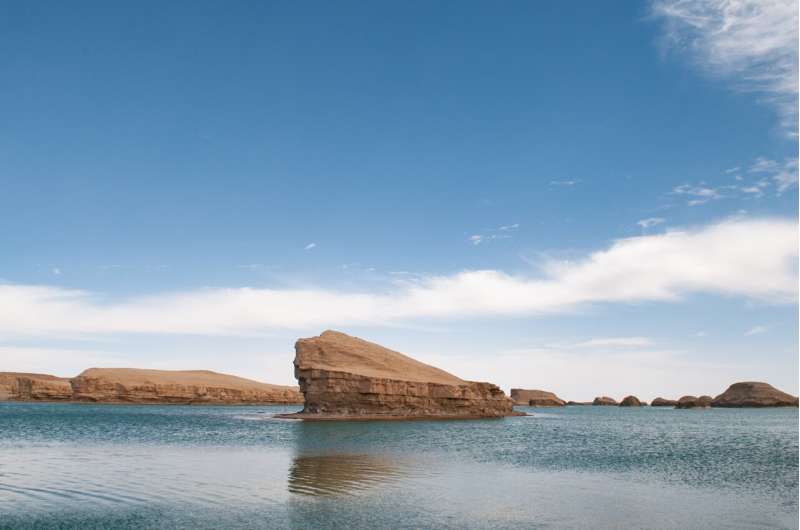This article has been reviewed according to Science X's editorial process and policies. Editors have highlighted the following attributes while ensuring the content's credibility:
fact-checked
trusted source
proofread
Study reveals sedimentary architecture and hydrodynamic processes involved in lacustrine embayed beach

Lacustrine beach ridge reservoirs have become important targets for oil exploration because of their proximity to oil sources and high reservoir porosity and permeability. However, the sedimentary architecture and hydrodynamic processes involved in their formation are still unclear, especially for the embayed beaches.
Researchers from the Northwest Institute of Eco-Environment and Resources (NIEER) of the Chinese Academy of Sciences (CAS) have investigated the sedimentary architecture and geomorphology of an embayed beach on the southern of Qinghai Lake, northwest China, based on ground penetrating radar, trenches, and modern beach observation. The study was published in Journal of Paleolimnology on July 6.
They found that the deposits on the embayed beaches consisted of three main sedimentary facies: washover deposition, fair-weather swash deposition and lagoonal deposition.
Depending on the variations in the sedimentary facies, the formation of the embayed beach could be divided into two stages: lake-level highstand and lake-level lowstand. Hydrodynamic changes in these two stages led to heterogeneity in sediment distribution, showing in the variations of morphology and sedimentary architecture.
During the lake-level highstand stage, geomorphic changes primarily occurred in the cross-shore direction. During the lake-level lowstand stage, the sediments were mainly transported alongshore within the embayed beach.
With the lake-level falling, the topography and hydrodynamics constantly changed along the embayed beach. The interaction of topography and hydrodynamics controlled the formation and evolution of the embayed beach.
"Our study not only improves understanding of the sedimentary processes involved in embayed beaches, but also provides guidance to beach ridge reservoirs for oil exploration," said Dr. Hao Lewei from NIEER, first author of the study.
More information: Lewei Hao et al, Sedimentary evolution of the embayed beach from Qinghai Lake, northern Qinghai-Tibetan Plateau, China, Journal of Paleolimnology (2023). DOI: 10.1007/s10933-023-00293-w
Provided by Chinese Academy of Sciences




















